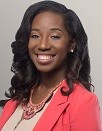Defense Counsel Journal
Taking a “Hard Look” at Expert Witness Testimony Under Rule 702
Volume 89, No. 1
April 29, 2022
 Luke Bosso
Luke Bosso
Luke Bosso
Luke Bosso is an associate in King & Spalding’s Trial and Global Disputes Practice. Luke specializes in litigating scientific defenses in mass tort litigation. Luke has experience developing scientific strategies for litigation and routinely collaborates with experts to analyze issues surrounding exposure, risk, and medical causation. Prior to law school, Luke earned a Master of Science degree in Pharmacy, concentrating in Pharmaceutical Outcomes and Policy.
 Eva Canaan
Eva Canaan
Eva Canaan
Eva Canaan is a partner in King & Spalding’s Trial and Global Disputes Practice. Eva’s practice focuses on the strategic development and coordination of the scientific defense in pharmaceutical and medical device products liability litigation. Eva is adept at challenging expert witness testimony in depositions and Daubert briefs in federal and state courts. In addition to her law degree, Eva holds a Masters in Epidemiology from Columbia University. Eva focuses on making complex scientific concepts accessible to judges and juries. She routinely works with experts in a variety of scientific disciplines, including epidemiology, toxicology, teratology, and clinical medicine.
 Geoffrey Drake
Geoffrey Drake
Geoffrey Drake
Geoffrey Drake is a partner in King & Spalding’s Trial and Global Disputes Practice, for which he serves as the Operations Partner. He is also Chair of the Pharmaceutical/Medical Device Litigation Team, which Legal 500 recognized in 2020 and 2021 as one of the top five such practices in the country, as well as a member of the firm’s seven-person Life Sciences/Healthcare Business Leadership Team. Geoffrey represents companies in the life sciences and healthcare, automotive and transportation, energy, and technology sectors in high-profile product liability and mass tort litigation. He has extensive experience litigating all phases of individual, multidistrict, and class action cases, as well as serving as coordinating and strategic counsel in connection with large dockets of cases at both the federal and state levels.
 TaCara Harris
TaCara Harris
TaCara Harris
TaCara Harris is a partner in King & Spalding’s Trial and Global Disputes Practice. TaCara represents clients in the pharmaceutical, medical device, and consumer products industries in nationwide product liability, mass tort, and personal injury litigation. TaCara has experience handling all aspects of large-scale, high-stakes mass tort litigation, from early case assessment, through discovery, and on to summary judgment, trial, and appeal. TaCara has successfully completed the International Association of Defense Counsel’s Trial Academy and actively participated on successful trial teams in seven high-stakes jury trials. In addition to her litigation practice, she has conducted a number of legal risk assessments and internal investigations. TaCara also leads numerous pro bono, community service, diversity and inclusion efforts in the firm and broader legal community.
 Munjot Sahu
Munjot Sahu
Munjot Sahu
Munjot Sahu serves as Counsel-Litigation and Legal Compliance at Eli Lilly and Company. Prior to joining Lilly, she was an attorney in the Indianapolis office of Faegre Baker Daniels LLP, where she specialized in commercial and product liability litigation.
IN pharmaceutical and medical device product liability litigation, state substantive law invariably requires a plaintiff to proffer reliable expert witness testimony that the drug or device at issue proximately caused the injury allegedly sustained by the plaintiff. Rule 702 of the Federal Rules of Evidence provides that expert testimony is admissible only if a party’s expert witness is “qualified as an expert by knowledge, skill, experience, training, or education,” and the potential expert testimony meets four requirements: (1) the expert’s scientific, technical, or other specialized knowledge will help the trier of fact to understand the evidence or to determine a fact in issue; (2) the testimony is based on sufficient facts or data; (3) the testimony is the product of reliable principles and methods; and (4) the expert has reliably applied the principles and methods to the facts of the case. Because the exclusion of expert testimony may be dispositive of, or significantly narrow, a plaintiff’s case, issues concerning its admissibility are hotly contested in virtually every pharmaceutical and medical device product liability lawsuit. Litigation over whether a drug or device can cause, and in fact did cause, a plaintiff’s alleged injury routinely involves a “battle of the experts” in the fields of epidemiology, pharmacology, toxicology, biostatistics, and other complex scientific disciplines. And judges—who often have little to no scientific educational background or training—must act as gatekeepers in navigating these complex subject areas to ensure that juries consider only reliable scientific evidence.
When making Rule 702 determinations, federal district courts often rely on Daubert v. Merrell Dow Pharmaceuticals, Inc.1509 U.S. 579, 113 S.Ct. 2786 (1993).
and its progeny, which articulate a non-exhaustive list of factors (“Daubert factors”) to consider: (1) whether the theory or technique in question can be and has been tested; (2) whether it has been subjected to peer review and publication; (3) its known or potential error rate and the existence and maintenance of standards controlling its operation; and (4) whether it has attracted widespread acceptance within a relevant scientific community.2Id. at 2790.
Unfortunately, the complexity of applying these legal standards to science, coupled with a deferential “abuse of discretion” standard of appellate review, has resulted in nearly 30 years of unpredictable, conflicting results due to inconsistent, and sometimes incorrect, judicial application of Daubert and Rule 702.
The Second Circuit’s appellate decision in In re Mirena IUS Levonorgestrel-Related Prod. Liab. Litig. (No. II),3982 F.3d 113 (2d Cir. 2020).
however, offers promising guidance that may help unify trial courts in the proper application of Daubert and Rule 702. There, the court affirmed the exclusion of all seven of Plaintiffs’ general causation experts from testifying in the Mirena® product liability multidistrict litigation (“MDL”), finding their proffered testimony inadmissible under the Daubert standard. Notably, the court emphasized that to uphold their gatekeeping function, federal trial courts must take a “hard look” at an expert’s proffered testimony and undertake a rigorous examination to ensure that the expert’s methodology is “reliable at every step of the way.”4Id. at 123.
This article examines the Mirena opinion and underlying trial court decision; analyzes the decision’s influence to-date; and predicts Mirena’s future impact considering the pending Rule 702 Amendments.
I. The “Hard Look”
The Mirena Intrauterine System (“Mirena”) is a plastic T-shaped intrauterine device, manufactured by Bayer, that releases a synthetic steroid hormone called levonorgestrel (“LNG”) into the uterus to prevent pregnancy. In re Mirena IUS Levonorgestrel-Related Prod. Liab. Litig. (No. II) was an MDL consolidating consumers’ claims that LNG released by their use of the Mirena caused them to develop idiopathic intracranial hypertension (“IIH”)—a rare disorder marked by increased cerebrospinal fluid pressure in the brain.5387 F. Supp.3d 323, 327 (S.D.N.Y. 2019), aff’d, 982 F.3d 113 (2d Cir. 2020).
Like other recent mass tort MDLs, the U.S. District Court for the Southern District of New York prioritized general causation as a threshold issue—that is, whether Plaintiffs had evidence sufficient to establish that Mirena can cause the alleged injury.6Id. at 329.
Plaintiffs proffered seven general causation expert witnesses, all of whom opined that Mirena could cause IIH.7Id. at 330.
Defendant-manufacturer Bayer, however, sought to exclude all of Plaintiffs’ experts’ testimony as unreliable under Rule 702.8Id.
The District Court held a three-day Daubert hearing featuring testimony from nineteen general causation witnesses—seven on behalf of Plaintiffs and twelve for Bayer.
On October 24, 2018, the District Court issued a thorough 156-page opinion and order granting Bayer’s Daubert motion as to all of Plaintiffs’ experts. As an initial matter, the District Court noted that Plaintiffs’ proffered experts failed to satisfy the traditional Daubert factors.9In re Mirena IUS Levonorgestrel-Related Products Liab. Litig. (No. II), 341 F.Supp.3d. 222, 247 (S.D.N.Y. 2018).
In fact, regarding lack of general acceptance in the scientific community, the court specifically noted that “although plaintiffs’ experts in this litigation have now so opined, outside of this litigation, no medical organization, regulatory agency, article in peer-reviewed scientific literature, or other research has found that use of Mirena is a cause of IIH.”10Id. at 226.
The court reasoned that it “must carefully scrutinize, pause, and take a hard look at the expert’s methodology.11Id. at 240 (citations omitted, emphasis added). While the court suggested that application of the “hard-look” analysis is limited to circumstances where an expert’s opinion is not supported by the traditional Daubert factors, this article argues that Rule 702 requires such analysis in all instances.
The court then set forth the following non-exhaustive principles that should guide a “hard look” reliability assessment of an expert’s methodology:
- whether a critical step in a prospective expert’s reasoning is based on a highly dubious analogy;
- whether the proffered opinion is based on data, a methodology, or studies that are simply inadequate to support the conclusions reached;
- whether an expert exceeds the limitations of the studies upon which he relied;
- whether an expert assumes a conclusion and “reverse-engineers” a theory to fit that conclusion; and
- whether an expert ignores evidence that is highly relevant to his conclusion, but contrary to his own stated methodology.12Id. at 241-242.
In other words, “an expert may not ‘pick and choose’ from the scientific landscape and present the court with what he believes the final picture looks like.”13Id. at 242 (quoting In re Rezulin Prod. Liab. Litig., 309 F.Supp.2d 531, 563 (S.D.N.Y. 2004)).
The court noted that “multi-criteria methodologies such as Bradford Hill or the ‘weight of the evidence’” standards can become “virtually standardless” and “unacceptably manipulable” by experts who seek to reverse-engineer a methodology to obtain a specific result.14Id. at 247.
The court devoted over 100 pages of the opinion to an extensive examination of each expert’s background, methodology, theories, and conclusions, including the extent to which they relied upon the Bradford Hill criteria—a methodology used by epidemiologists to determine whether there is sufficient evidence to infer a causal connection from a mere association. The court explained in great detail how each experts’ analysis suffered from serious methodological deficiencies—selective review and cherry-picking of favorable data, failure to consider and reconcile contradictory evidence, failure to address methodological limitations of the studies upon which an expert relied, and drawing conclusions from studies that exceeded limitations identified by those study authors. Additionally, Plaintiffs’ experts contradicted each other, made conclusions that scientific study authors did not make, and relied on untested hypotheses.15Id. at 248.
The court also criticized Plaintiffs’ experts “unweighted and unmoored application of the nine Bradford Hill factors,” and warned that the experts’ “unidirectional misapplication of a series of Bradford Hill criteria is concerning—it is a red flag. Rather than suggesting a scholar’s considered neutral engagement with the general causation question at hand, it suggests motivated, result-driven, reasoning.”16Id.
For example, Plaintiffs’ biostatistician analyzed causation using the Bradford Hill criteria but did not explain the weight that he attached to any of the nine criteria when reaching his opinion.17Id. at 248.
The court took issue with this approach, because if jurors disagreed with any of the expert’s conclusions regarding one or more criteria, they would have no way of considering how their disagreement with that particular criteria altered the reliability of the expert’s final conclusion.18Id.
The court noted that this “unscientific ‘black box’ approach to Bradford Hill review almost entirely prevents the finder of fact, or other experts seeking to validate or check his work, from conducting a meaningful and informed review.”19Id. at 249.
In addition to conducting a rigorous analysis of each Plaintiffs’ expert’s methodologies, the court examined the state of the scientific research and highlighted the fact that several epidemiological studies of Mirena and other contraceptive devices like Mirena did not find that LNG increases the risk of IIH. Ultimately, the District Court deemed Plaintiffs’ experts proffered testimony unreliable and nothing more than conjectural, unproven, “speculative working theories.”20Id. at 301.
Accordingly, the court granted Bayer’s Daubert motion and excluded all seven of Plaintiffs’ experts.21Id. at 305.
Bayer then moved for summary judgment for lack of general causation, which the District Court granted, resulting in the dismissal of all 920 cases remaining in the Mirena MDL.22In re Mirena IUS Levonorgestrel-Related Prods. Liab. Litig., 387 F. Supp.3d 323 (S.D.N.Y. 2019).
II. The Appeal
On appeal, Plaintiffs asserted three main arguments. Plaintiffs argued that the District Court erred by taking a “hard look” at each expert’s methodology. Such analysis, according to Plaintiffs, was “too searching” and created a heightened standard which was “indistinguishable from a cross-examination at trial” and a “wholesale re-evaluation of the available scientific evidence.”23Plaintiffs-Appellants’ Brief, In re: Mirena IUS Levonorgestrel-Related Products Liability Litigation (No. II) (2d Cir. 2019) (No. 19-2155), 2019 WL 6696006 at *15, *27.
Plaintiffs also complained that the “hard look” constituted an improper weighing of the evidence and making of factual inferences against the Plaintiffs’ case.24Id. at *27, *30.
The Second Circuit disagreed, holding:
[A]n expert’s methodology must be reliable at every step of the way, and, in deciding whether a step in an expert’s analysis is unreliable, the district court should undertake a rigorous examination of the facts on which the expert relies, the method by which the expert draws an opinion from those facts, and how the expert applies the facts and methods to the case at hand.25Mirena, 982 F.3d at 123.
The court concluded, “not only was it appropriate for the district court to take a hard look at plaintiffs’ experts’ reports, the court was required to do so to ensure reliability.”26Id. (emphasis added).
Plaintiffs argued that the District Court impermissibly focused on Plaintiffs’ experts’ conclusions instead of their methodologies. The Second Circuit was unconvinced and cited numerous examples of the District Court’s “in-depth analysis of whether the experts applied their methodologies reliably.”27Id.
In any event, the court held, courts must consider an expert’s conclusions when assessing the reliability of expert witness opinion. As noted in Gen. Elec. Co. v. Joiner, “conclusions and methodology are not entirely distinct from one another.”28522 U.S. 136, 146, 118 S. Ct. 512, 519, 139 L. Ed. 2d 508 (1997).
In fact, Rule 702 specifically requires courts to assess whether an “expert has reliably applied the principles and methods to the facts of the case.”29Fed. R. Evid. 702.
Finally, Plaintiffs argued that the District Court “erred by requiring the experts to back their opinions with studies definitively supporting their conclusions."30Mirena, 982 F.3d at 123
The Second Circuit found this argument equally unavailing on the basis that the expert’s underlying methodology was unreliable.31Id. at 123-124.
Therefore, the District Court properly excluded the opinions.32Id. at 124.
In sum, the Second Circuit concluded that the District Court “appropriately undertook a rigorous review of each of plaintiffs’ experts and, based on that review, reasonably found that the experts’ methods were not sufficiently reliable and that their conclusions were not otherwise supported by the scientific community. Accordingly, the district court did not abuse its discretion in precluding the experts’ conclusions.”33Id.
The Second Circuit affirmed both the exclusion of Plaintiffs’ experts and the granting of summary judgment for all cases because Plaintiffs could not prove general causation—a necessary requirement to proceed.
III. The Current Trend
Ten months later, several other courts have cited both the District Court’s and the Second Circuit’s opinions in cases excluding purported expert testimony as unreliable.34See e.g., In re Zimmer M/L Taper Hip Prosthesis or M/L Taper Hip Prosthesis with Kinectiv Tech. & VerSys Femoral Head Prod. Liab. Litig., No. 18-MC-2859 (PAC), 2021 WL 3475681, at *7 (S.D.N.Y. Aug. 6, 2021) (excluding expert’s testimony where there was too large a gap between the data she relied upon and the conclusions she reached); In re Taxotere (Docetaxel) Prod. Liab. Litig., No. 16-17039, 2021 WL 311865, at *3 (E.D. La. Jan. 29, 2021), reconsideration denied, No. 16-17039, 2021 WL 1295090 (E.D. La. Apr. 7, 2021) (excluding expert’s opinion where he had not conducted a Bradford Hill analysis and thus had not assessed whether there was a true causal relationship underlying the statistical association he had identified between the subject pharmaceutical drug and the alleged injury); Rodman v. Otsuka Am. Pharm., Inc., No. 18-CV-03732-WHO, 2020 WL 2525032, at *7 (N.D. Cal. May 18, 2020), reconsideration denied, No. 18-CV-03732-WHO, 2020 WL 4207441 (N.D. Cal. July 22, 2020) (excluding expert where her opinions exceeded the boundaries of the conclusions of the sources she relied upon); Davis v. McKesson Corp., No. CV-18-1157-PHX-DGC, 2019 WL 3532179, at *30 (D. Ariz. Aug. 2, 2019) (excluding expert’s testimony where his broad causation hypothesis did not show to be validated by reliable principles and methods).
Indeed, citing to Mirena, a federal district court recently excluded all of plaintiffs’ general causation experts after taking a “hard look” at their methodologies. In Daniels-Feasel v. Forest Pharmaceuticals, Inc., a group of plaintiff-mothers and their minor children sued the manufacturers of Lexapro, a prescription antidepressant medication, alleging that the mothers’ use of the medication caused their children to develop autism spectrum disorder (“ASD”).35No. 1:17-cv-04188-LTS-JLC, 2021 WL 4037820, at *1 (S.D.N.Y. Sept. 3, 2021).
Plaintiffs presented three experts who offered general causation and biological plausibility opinions regarding the relationship between Lexapro and ASD. Like in Mirena, the Daniels-Feasel plaintiffs’ experts failed to satisfy the traditional Daubert factors—their theories were not generally accepted and had not been tested or submitted for peer review or publication, nor had they identified an error rate for application of the Bradford Hill factors.36Id. at 14, 27.
The Daniels-Feasel court noted that such circumstances called for a “hard look” at the experts’ methodology—two of whom were also excluded in Mirena:
Dr. Moyé’s selective and biased reliance on favorable sources to support his opinions on causation, failure to rigorously explain his application of the Bradford Hill factors under the weight of the evidence methodology, and ignorance of pertinent categories and sources of information in his report is demonstrative of an unreliable application of purportedly sound scientific methodology, which fails to meet the requisite standards outlined under both Daubert and Rule 702. For these reasons, the Court finds that Dr. Moyé’s general causation opinion is inadmissible.
***
A rigorous examination of Dr. Plunkett’s analysis reveals that she conducted a flawed and misleading Bradford Hill analysis where she selectively analyzed four of the nine factors, primarily relied on cherry-picked, favorable animal data that supports her conclusions within those analyses, and failed to mention, much less reconcile, other categories of relevant data constituting contrary authority.37Id. at 14-15, 35.
The Daniels-Feasel court, relying heavily on Mirena, granted in its entirety defendant’s omnibus motion to exclude the testimony proffered by plaintiffs’ experts.
IV. Looking Ahead
In analyzing the recent case law and predicting future developments, it is important to note that the “hard look” language does not create a new Rule 702 standard, but merely re-enforces trial courts’ “gatekeeping” responsibility.38Fed. R. Evid. 702 Advisory Committee Note to 2000 Amendment (“The amendment affirms the trial court’s role as gatekeeper and provides some general standards that the trial court must use to assess the reliability and helpfulness of proffered expert testimony.”).
Such rigorous examination is indistinguishable from the same analysis that every court should conduct when considering Rule 702 motions. Flawed methodology—such as cherry-picking favorable data, ignoring and/or failing to reconcile contradictory evidence, and drawing conclusions from studies that exceed or contradict those of the study authors—should be considered whether a trial court is calling its inquiry a “hard look” or not.
That said, we expect some litigants to attempt to limit the application of a court’s “hard look” by arguing that it is a heightened burdened only necessary when none of the traditional Daubert factors are satisfied. This interpretation leaves an open question as to whether a “hard look” is permissible when some, but not all, the Daubert factors are met. Such narrow interpretation does not comport with Rule 702 or the Second Circuit’s decision that not only authorizes—but also requires—district courts to conduct rigorous analyses into experts’ methodology under all circumstances.
Additionally, the Second Circuit’s opinion may gain traction under the currently proposed amendments to Rule 702. On August 6, 2021, the Judicial Conference Committee on Rules of Practice and Procedure approved publication of the following proposed amendments for public comment:
RULE 702: Testimony by Expert Witnesses
A witness who is qualified as an expert by knowledge, skill, experience, training, or education may testify in the form of an opinion or otherwise if the proponent has demonstrated by a preponderance of the evidence that:
(a) the expert's scientific, technical, or other specialized knowledge will help the trier of fact to understand the evidence or to determine a fact in issue;
(b) the testimony is based on sufficient facts or data;
(c) the testimony is the product of reliable principles and methods; and
(d) the expert has reasonably applied expert’s opinion reflects a reliable application of the principles and methods to the facts of the case.
The first addition is designed to address the fact that some courts have failed to apply the preponderance of the evidence standard to the reliability requirement for expert testimony.39Memorandum (and attachments) from Honorable Patrick J. Schiltz, Chair Advisory Committee on Evidence to Honorable John D. Bates, Chair Committee on Rules of Practice and Procedure, (May 15, 2021), available at https://www.uscourts.gov/sites/default/files/preliminary_draft_of_proposed_amend-ments_2021_0.pdf (citing excerpts from the Report of the Advisory Committee on Evidence Rules (May 15, 2021)).
The proposed language clarifies that the proponent of expert testimony has the burden of proving that it more likely than not satisfies each element of Rule 702 in all cases and highlights the District Court’s erroneous proposition that a court need only take a “hard look” at the reliability of expert testimony under certain circumstances.
The proposed amendment to subsection (d) is meant to address the problem of an expert overstating results, “for example, by stating an opinion as having a ‘zero error rate,’ where that conclusion is not supportable by the methodology.”40Id. at 296.
The amendment emphasizes that courts must consider the expert’s conclusion, not just the methodology purportedly used, and must find that the opinion actually proceeds from a reliable application of the methodology.41Id.
In other words, “[a] testifying expert’s opinion must stay within the bounds of what can be concluded by a reliable application of the expert’s basis and methodology.”42Id. at 297.
Although the Draft Committee Notes clarify that “nothing in the amendment requires the court to nitpick an expert’s opinion,” the amendment is being proposed because some courts have wrongfully held that critical questions of sufficiency and application of an expert’s opinion go to weight and not admissibility.43Id. at 311.
If adopted, the proposed amendments taken together would reinforce the already existing requirement that trial courts act as gatekeepers and conduct a rigorous analysis under Rule 702 in ways that resemble Mirena’s “hard look.”
V. Conclusion
Lawyers and commentators alike have lamented over the unpredictability and inconsistency of the outcomes of Rule 702 motions since Daubert was decided nearly 30 years ago. Mirena serves as an exemplar case for federal district courts attempting to understand how far they can—and should—go in terms of rigor and depth in conducting their Rule 702 analyses. The Second Circuit reaffirmed the trial court’s important role in ensuring that unreliable expert testimony does not reach the jury and confirmed that it is not only appropriate, but mandatory for judges to take a “hard look” at proffered expert testimony to ensure that the expert’s methodology is “reliable at every step of the way.” Mirena also provides helpful guidance to litigants who seek to uphold scientific integrity within the courtroom. Defense lawyers would do well to keep the decision in their libraries and track its subsequent influence when strategizing and developing their scientific defenses in pharmaceutical and medical device products liability litigation.
View Article
Back